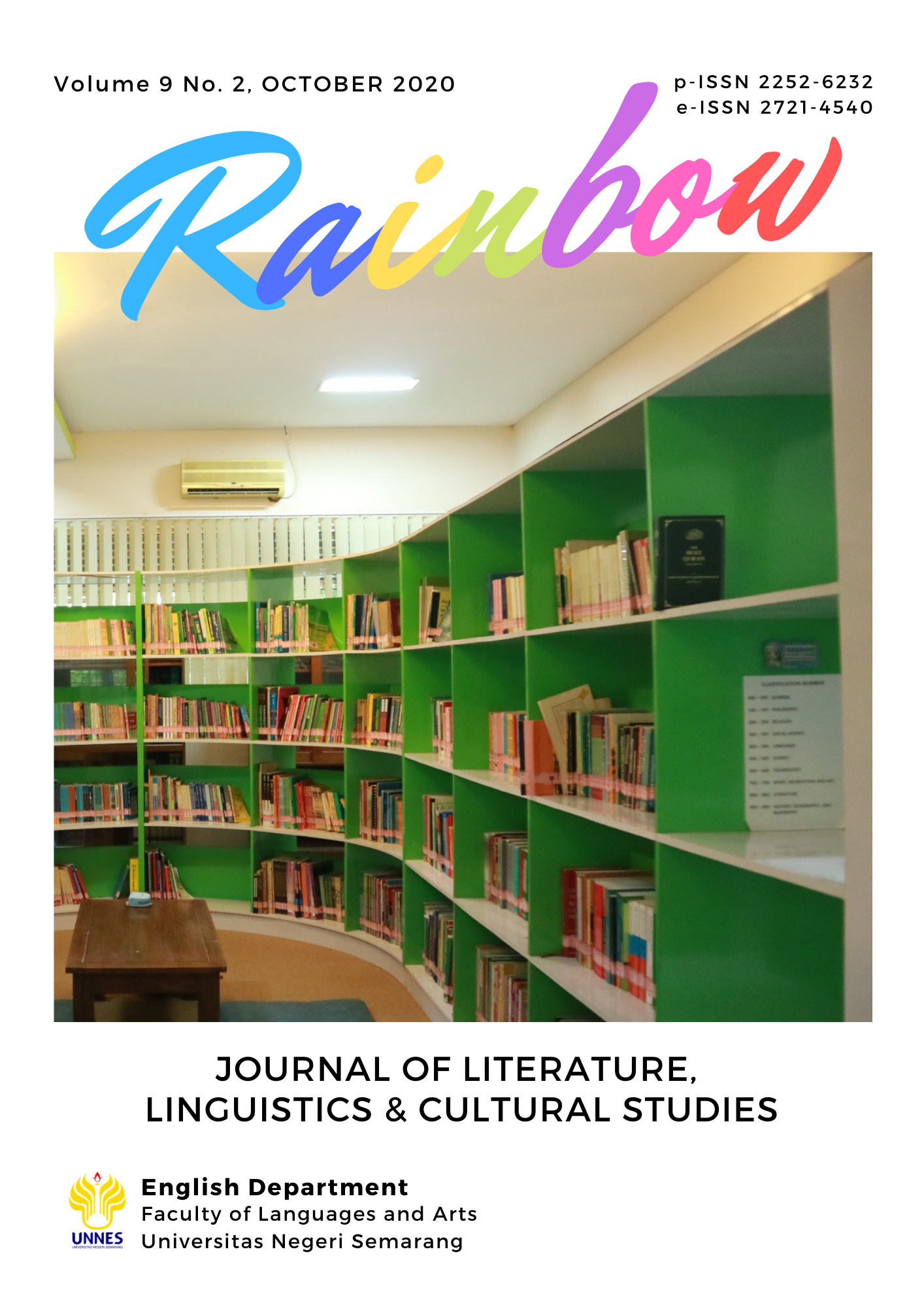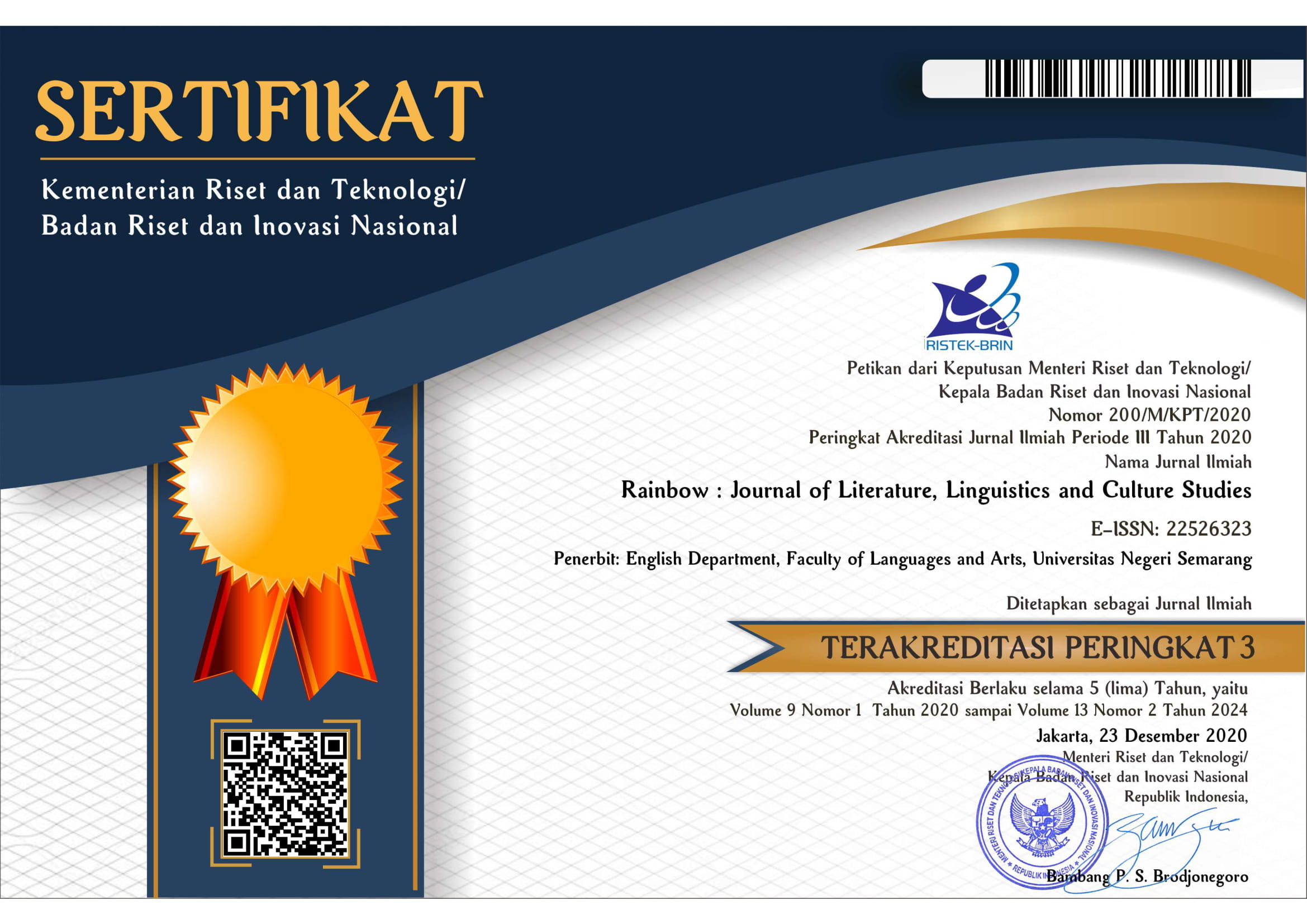The River Exists, Therefore I Am: Ecocriticism, Nature and Human Nature in Willa Cather’s 'The Enchanted Bluff'
Abstract
Today, environmental degradation and nature preservation are among the most discussed topics in media, academia, and beyond. Adopting Glotfelty’s ecocritical approach, this article investigates the relationship between human culture and the natural world in Willa Cather’s The Enchanted Bluff (2009). The present study determines the different representations of nature along with the ecological issues to (a) heighten the ecological awareness and (b) to provide a fresh perspective to look at the natural world; therefore, this article shifted its focus from the anthropocentric attitude to the biocentric and focuses on nature and its correlation with humanity. This paper challenges the human/nature binary to help us look at the natural world stripped of established stereotypes. The results indicate that nature is an indivisible portion of human identity; furthermore, humankind and the natural world are codependent and interconnected; the results also emphasize that preserving the natural world is, indeed, the prerequisite for the protection of humanity.
References
Barry, Peter. (2009). Beginning Theory: An Introduction to Literary and Cultural Theory. (3rd ed.). Manchester University Press.
Bartosch, Roman, & Greg Garrard. (2014). The Function of Criticism. A Response to William Major and Andrew McMurry’s Editorial. In Roman Bartosch & Sieglinde Grimm (Eds.), Teaching Environments: Ecocritical Encounters (pp. 220-227). Peter Lang Publishing Group.
Bertens, Johannes W. (2014). Literary Theory: The Basics (3rd ed.). Routledge.
Cather,Willa. (2009). The Enchanted Bluff: Short Story. Pymble, NSW: HarperCollins e-books.
Clark,Timothy. (2011). The Cambridge Introduction to Literature and the Environment. Cambridge University Press.
Dobie, Ann B. (2012). Theory into Practice: An Introduction to Literary Criticism (3rd ed.). Wadsworth Cengage Learning.
Garrard, Greg. (2004). Ecocriticism. Routledge.
Glotfelty, Cheryll, & Harold Fromm. (1996). The Ecocriticism Reader: Landmarks in Literary Ecology. Georgia University Press.
Innes, Paul. (2010). binary opposition. In Michael Payne & Jessica Rae Barbera (Eds.), A Dictionary of Cultural and Critical Theory. (2nd ed.). Wiley-Blackwell. (pp. 74-75).
Klages, Mary. (2012). Key Terms in Literary Theory. Continuum International Publishing Group.
Love, Glen A. (2003). Practical Ecocriticism: Literature, Biology, and the Environment. Virginia University Press.
Nichols, Ashton. (2011). Beyond Romantic Ecocriticism: Toward Urbanatural Roosting. Palgrave Macmillan.
Phoenix, Joaquin. (2020, February 10). Best Actor acceptance speech. The 92nd Academy Awards (Oscars), Los Angeles, CA, United States.
Watson, Robert N. (2014). Shadows of the Renaissance. In Greg Garrard (Ed.), The Oxford Handbook of Ecocriticism. Oxford University Press. (pp. 40-59).







